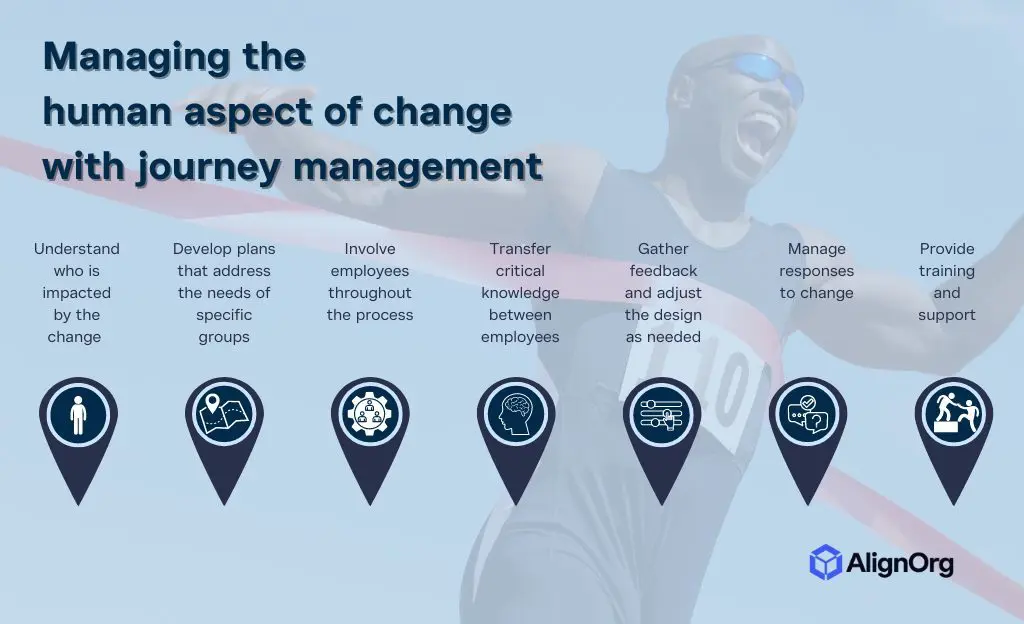Journey management plays a crucial role in organizational transformations. Last month, my colleague Adam Derk shared how journey management combines the practices of change management, project management and organization design to help you successfully navigate a large-scale transformation. Today, we’re sharing ways journey management can assist in managing the human aspect of change. These people movement components are essential for ensuring a smooth transition and successful implementation of new strategies.
Key Elements of People Movement in Journey Management
1. Stakeholder Assessment: Accurately identifying and evaluating stakeholders affected by the transformation is critical. This involves understanding their roles, concerns, and potential impacts on the change process.
2. Comprehensive Change Plans: Developing detailed plans that address the specific needs of different employee groups, ensuring their smooth transition to new roles or ways of working.
3. Active Engagement: Continuously involving employees throughout the transformation process, fostering open communication and addressing concerns in real-time.
4. Knowledge Transfer: Facilitating the sharing of information and skills between employees, ensuring that critical knowledge is retained and distributed effectively during the transition.
5. Iterative Organization Design: Recognizing the need for flexibility in organizational structure and being willing to adjust designs based on employee feedback and changing needs.
6. Structured Change Management: Implementing strategies to manage individual and organizational responses to change, promoting higher adoption rates and smoother transitions.
7. Training and Development: Providing necessary training and support to help employees adapt to new roles, processes, or technologies.

By focusing on these people movement components, organizations can significantly increase the chances of successful transformation, ensuring that employees are not just passive recipients of change but active participants in the journey.
Source:
[1] Journey Management as the New Design System – TheyDo https://www.theydo.com/blog/articles/journey-management-as-the-new-design-system
[2] Transform with Confidence: The Case for Journey Management https://alignorg.com/transform-with-confidence-the-case-for-journey-management/
[3] The Practice of Customer-Journey Management https://www.nngroup.com/articles/customer-journey-management/
[4] Journey Management Plan: Everything You Need To Know – SafetyIQ https://safetyiq.com/insight/journey-management-plan-everything-you-need-to-know/
[5] The basics of Customer Journey Management | Smaply Blog https://www.smaply.com/blog/customer-journey-management
